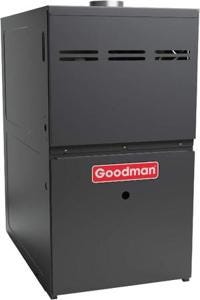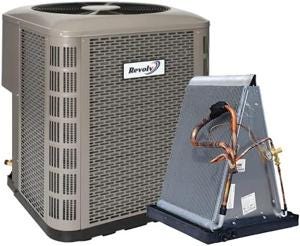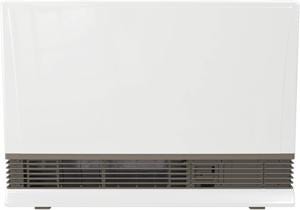A reliable furnace is a must when it comes to keeping your home warm during the chilly months. But how much should you expect to spend on one? The answer depends on several factors, including the type of furnace, its efficiency rating, and the installation costs. Let’s break it all down so you can make an informed decision.
Types of Furnaces and Their Costs
When selecting a new heating system, it’s important to remember that the right choice can greatly effect your home’s comfort, efficiency, and your long-term savings. There are several options available, and the best one for you depends on your specific needs, climate, and budget. Here’s an overview of the four main types of furnaces, what each offers, and their associated costs:
1. Gas Heating Systems

Gas furnaces are by far the most popular heating system in the United States. This is due to their efficiency, relatively low operating costs, and long lifespan. A gas heating system runs on natural gas, making it a highly efficient choice, especially in colder regions where heating needs are high. Gas is often more affordable than electricity, and the systems themselves are designed to provide strong, even heat distribution throughout the home.
What makes a gas heating system a great choice?
Gas heating systems are designed for those looking to balance comfort and cost-efficiency. One of the primary reasons they are so commonly used is their energy efficiency. Gas furnaces typically feature a high Annual Fuel Utilization Efficiency (AFUE) rating, which measures how well the furnace converts energy from fuel into heat. Many modern gas furnaces have an AFUE of 90% or higher, which means they waste very little fuel during the heating process.
Additionally, gas heating is more reliable for long-term use, especially in colder climates. Natural gas is readily available in many parts of the country and is a more stable energy source than oil or propane. Many homeowners opt for gas heating because it’s both effective and cost-efficient in the long term.
- Cost Range: $2,000 to $5,000 (including installation)
- Features to Look For: High-efficiency models with an AFUE (Annual Fuel Utilization Efficiency) rating of 90% or more.
- Popular Models: Check out this affordable gas furnace on Amazon.
2. Electric Heating Systems
Electric furnaces are often considered a budget-friendly option for homeowners who live in milder climates or in areas where gas or oil is not readily available. While the upfront cost of electric furnaces is typically lower than gas or oil systems, the operational costs tend to be higher. This is because electricity is often more expensive than natural gas. However, if you live in a mild climate or only need to heat a smaller space, an electric furnace could be a practical choice.
Why choose electric heating?
Electric heating systems are typically compact and easy to install. They don’t require any fuel storage or complicated venting systems, which makes them less costly to install and maintain compared to gas or oil furnaces. Additionally, electric systems are often quieter and provide a more consistent heat without the need for a fuel source like gas, propane, or oil.
Electric furnaces are ideal for homes that don’t have access to natural gas and for homeowners who want a low-maintenance, simple solution. They are also a good fit for smaller homes or apartments where space and heating needs are limited. With fewer moving parts, electric heating systems are less likely to break down and require repairs.
- Cost Range: $1,500 to $3,000 (including installation)
- Features to Look For: Compact size and low maintenance requirements.
- Popular Models: Explore electric furnace options on Amazon.
3. Oil Heating Systems

Oil furnaces are less common than gas or electric heating systems but are still widely used in rural areas or regions that don’t have natural gas pipelines. Oil is an excellent fuel source for heating, and oil furnaces are known for their ability to provide intense, consistent heat. This makes them a solid choice for colder climates, where reliable heating is essential.
What sets oil heating apart?
Oil furnaces are often found in areas where natural gas isn’t available, but the homeowners still want the high-efficiency heating that oil offers. Oil furnaces are typically more expensive than their gas counterparts but can offer more intense heating, which is beneficial in areas with very harsh winters. The downside is that oil is a more volatile fuel source, with fluctuating prices and availability being a concern for some homeowners.
One of the reasons people opt for oil heating is that it provides high heat output, making it ideal for larger homes or for regions where temperatures can drop drastically. Additionally, oil tends to burn hotter than natural gas, so oil heaters can be particularly effective in keeping a home warm.
- Cost Range: $2,500 to $6,000 (including installation)
- Features to Look For: Energy-efficient designs and durable construction.
- Popular Models: Find oil furnaces on Amazon.
4. Propane Heating Systems

Propane heating systems are similar to gas systems in that they burn a fuel to generate heat, but instead of natural gas, they use propane. Propane is a common alternative in rural areas where natural gas lines may not be available, and it offers an efficient and reliable heating solution for homes that need it.
Why choose propane heating?
Propane heating systems are particularly effective in rural areas because propane is stored in tanks and doesn’t require any extensive pipeline infrastructure. Like gas systems, propane furnaces are efficient and tend to have higher AFUE ratings than oil or electric systems. Many propane furnaces can also be converted to natural gas models if access to a gas pipeline becomes available in the future, providing additional flexibility.
Propane is a reliable energy source for heating, and it burns cleanly, making it an attractive option for homeowners looking to minimize their environmental footprint. Propane systems are highly efficient, especially when paired with smart thermostats and zone control heating systems.
- Cost Range: $3,000 to $5,500 (including installation)
- Features to Look For: High efficiency and compatibility with propane tanks.
- Popular Models: Shop propane furnaces on Amazon.
Additional Costs to Consider
While the furnace itself is a significant part of the expense, there are other costs to keep in mind:
- Installation: Depending on the complexity, this can range from $500 to $2,000.
- Ductwork: If your home needs new or upgraded ductwork, expect to pay an additional $1,000 to $5,000.
- Thermostat: Smart thermostats, like the Honeywell Home T9 Smart Thermostat, can cost between $150 and $300 but offer significant energy savings.
- Maintenance Plans: Regular tune-ups can extend the life of your furnace and typically cost $100 to $300 per year.
What’s the Best Furnace for Your Budget?

Choosing the right Heating system depends on your specific needs and budget. Here are some tips:
- Budget-Friendly: Electric furnaces are the most affordable upfront.
- Energy-Efficient: Gas furnaces with a high AFUE rating can save you money in the long run.
- Eco-Friendly: Look for Energy Star-certified models to reduce your carbon footprint.
Final Thoughts
Investing in a heating system is a big decision, but understanding your options can make the process easier. Whether you’re looking for a budget-friendly electric option or a high-efficiency gas model, there’s something for every home and budget.
Ready to upgrade your heating system? Check out these top-rated furnaces on Amazon. Don’t forget to explore financing options and maintenance plans to maximize your investment.
*Affiliate links included in this post may earn a commission for qualifying purchases.

